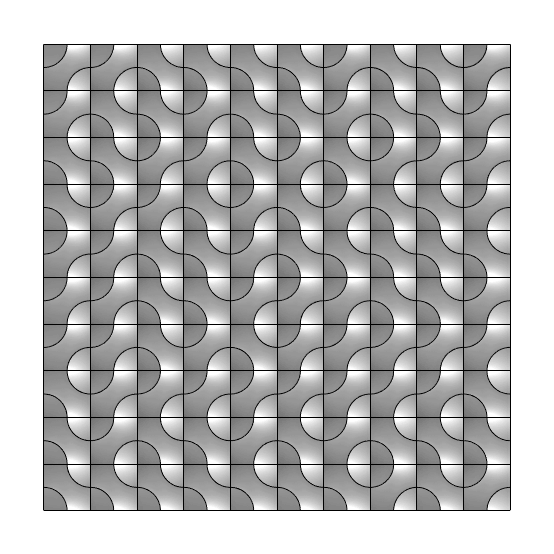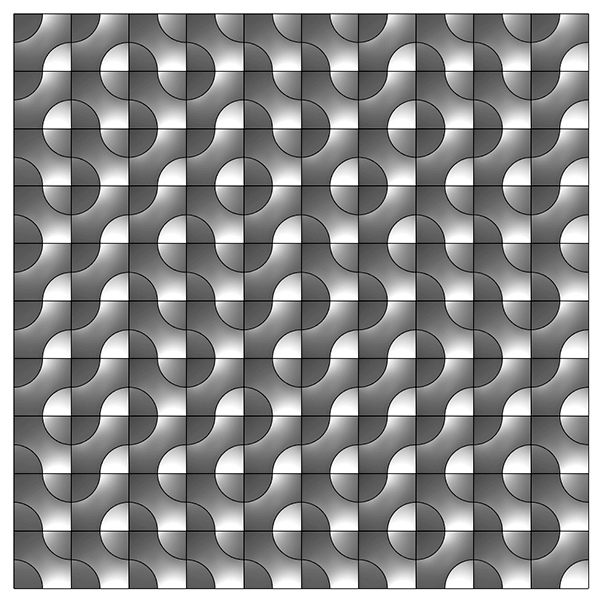Truchet Tiling
This elegant and straightforward tiling geometry is credited to Dominican priest Sebastien Truchet in 1704 and was documented in a book titled “Memoir sur les Combinasions” (A Memoir on Combinations). After delving into the renowned Truchet Patterns in 2013, I revisited their three-dimensional tiling counterparts today. This served as a valuable exercise in geometry during my previous Design Geometry course. I believe it enhances one’s proficiency in mastering the technical aspects of Rhino software and in creating seamless tilings through edge and surface relationships. These systems rely on rotational symmetry, presenting a stimulating challenge for designers to navigate and explore variations within a predetermined set of geometric elements. In this recent study, I optimized the Grasshopper code for efficiency and readiness for production. Thus, there are now several parameters available to adjust the shape. Looking ahead, I contemplate creating quad-tiling, triangular, and hexagonal versions of the pattern in the future.

This Grasshopper definition generates the standard Truchet tiling and its variations. The input parameters are the size, shape, and depth of the resulting tiles. The output of the definition is the solid 3d model of the individual tiles. Therefore, it is ready for 3d printing, molding, etc. In addition, I added the Rhinoceros (3dm) and AutoCAD (dwg) files of the standard output for those who will produce it directly. The code is using native Grasshopper components. Thus, no add-ons are necessary for it to work.

You can rebuild the Grasshopper definition by looking at the image above. However, would you consider being my Patreon if you want to support this website by downloading my working file? Here is the link to my Patreon page, including the Truchet Tiling and more.









